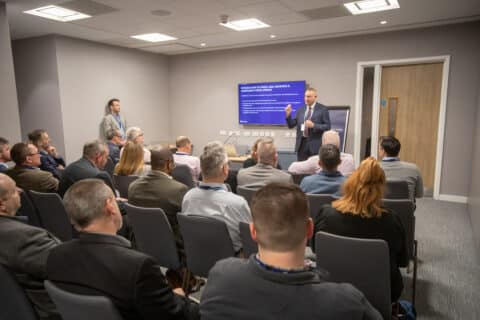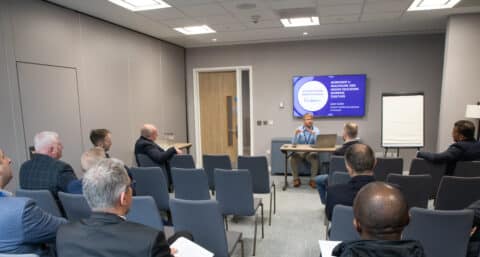Author, Sienna Kozin Appenzeller, Senior Marketing Coordinator at CriticalArc
We enjoyed a particularly full schedule at this year’s SafeZone Users’ Conference in Birmingham, UK with more topical issues on the agenda for discussion than ever – challenges ranging from crisis management, and incident preparedness, to mental health safeguarding.
We had greater international involvement too, with a strong presence from the U.S., and Australia, as well as the U.K., and some insightful tactical discussions. For example, the policing team from the University of Arkansas drew widespread admiration for their insights into handling active threats on-campus using SafeZone.
The presence of Chubb this year was of major interest for a number of existing customers and prospective customers. The fact that in-house security departments can now enhance their community protection with 24/7 SafeZone monitoring from Chubb’s highly resourced and capable teams, is seen as a game-changer for many. Similarly, the fact that OmniGuard can now be run on Motorola smart (Android OS) radios (supported by the team at DTS Solutions) is a practical innovation that aligns well with operations for a number of users and reduces the number of devices an officer has to carry. It was also evident, that the introduction of Juniper Networks as a sponsor and partner at this year’s event was timely. Many in our community are working with their IT executives supporting strategies around SMART or intelligent campuses. Juniper’s unique virtual BLE indoor positioning solution, integrated with SafeZone, is seen by many as transformative. It supports closer collaboration across multiple departments whilst also delivering enhanced safety.
But one important point that came up in conversation wasn’t on the official agenda at all.

It’s often the case that, when customers first look at SafeZone, they have a single, specific use in mind – lone worker safety for example, or mass communications. But during the adoption process, or in the months soon after, they move on to realizing the value of its other functions – for example as response coordination tool, a resource management system, a driver of community engagement, or a tip-reporting tool for maintenance issues. Or as a support tool for those struggling with mental health issues, or as a means to provide enhanced protection for specific at-risk groups.
So, from the outset SafeZone users are motivated to think about, and to use the technology creatively. This approach has also contributed to an increased value being perceived by their institutions regarding the security or safety department.
This has led many to engage in new ways with other departments and stakeholders across their organizations, because many of those new functions involve unlocking value beyond security – for example, the benefits for IT departments, HR, communications, and business development, or in particular service areas. One of our speakers told us how, a year after adoption, department managers in his hospital were discussing SafeZone’s value for clinical resource management – ‘If we tried to take SafeZone away from them now, they’d kick up a fuss’, he said.
Increasingly, we are also seeing collaboration between SafeZone customers, with city-wide and regional alliances being formed to extend coverage and protection for each other’s user communities.
These alliances are no longer just sector-specific, as they were two or three years ago. They are now linking together organizations from different sectors – universities and hospitals, for example, which share common challenges and priorities, and have significant community crossover. But coming away from our busy three days in Birmingham, what stays with me most is the feedback from customers around how strong the community spirit is among users. Those that were starting their SafeZone journey were given new confidence as they headed back to their organizations to develop their business cases.
Talking to others who were several years further along the road, they could see that the enthusiasm for SafeZone doesn’t diminish with time, it grows.

For the team at CriticalArc, it’s massively energizing spending the time with our community, listening and learning about their respective journeys and visions for our solution. Exciting times ahead!
